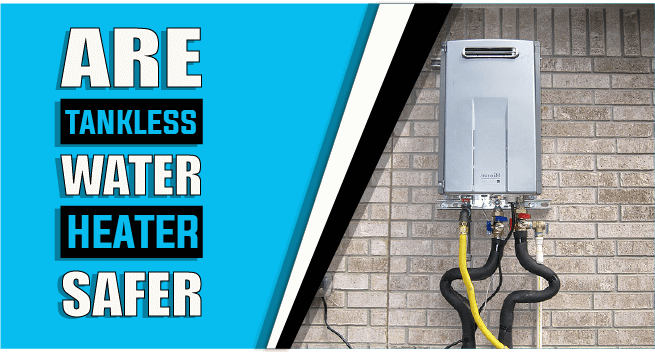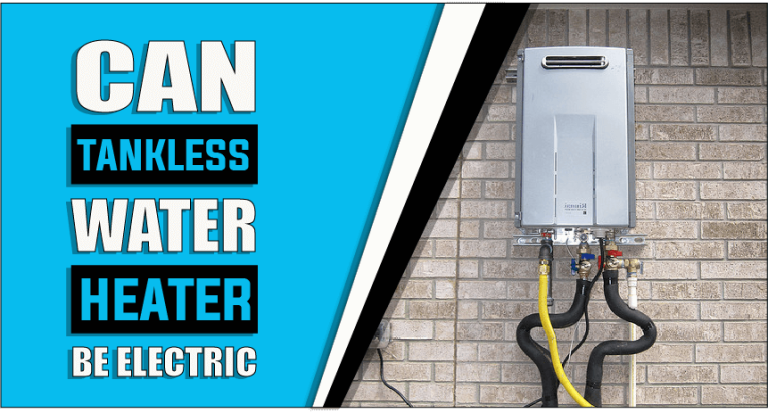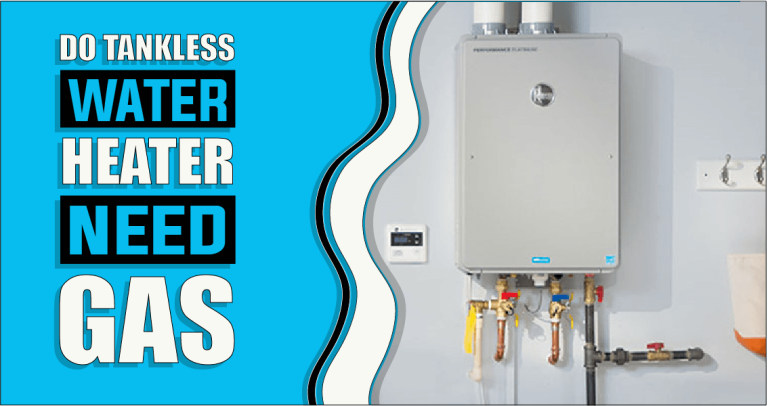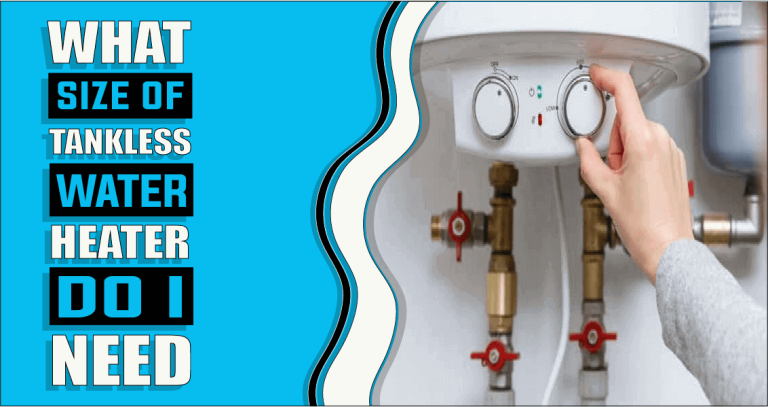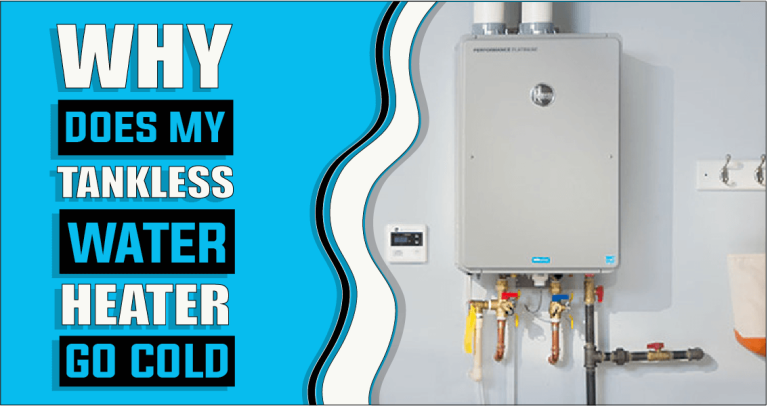Where Should A Tankless Water Heater Be Installed – The Truth Reveals
Are you planning to install a tankless water heater but don’t know where the best place for it would be? You’re in luck! Installing a tankless water heater is not only cost-effective and energy efficient, but it also provides all your hot water needs on demand. But before you take the plunge and invest in this wonderful technology, there are some things to consider when deciding where should a tankless water heater be installed. In this blog post, we’ll explore all the locations that are suitable for installing a tankless water heater and discuss their advantages. So if you’re looking to get more bang for your buck with endless hot showers and maximum savings on utilities, read on!
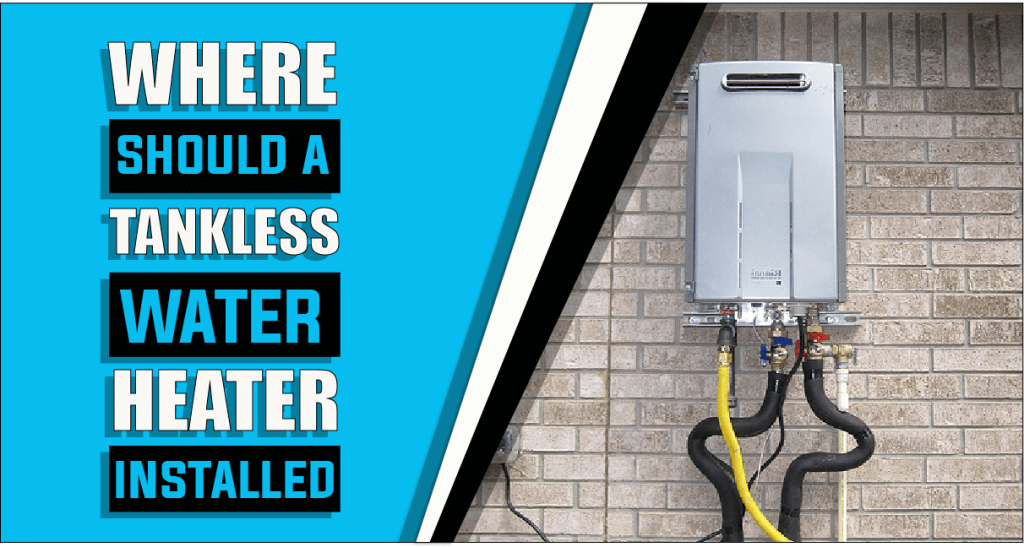
Let’s explore where should a tankless water heater be installed
A tankless water heater can provide considerable energy savings and convenience, as compared to traditional tank-style water heaters. When considering the installation of a tankless water heater, there are several factors to consider to ensure that it is installed properly and efficiently.
First and foremost, a tankless water heater should be installed indoors in an area that is dry and well-ventilated. It also needs access to gas lines or electricity for power, as well as cold and hot water supply lines. In addition, the space around the unit must allow for adequate airflow so that it does not overheat or become damaged due to overheating.
Furthermore, when choosing a spot for installing your tankless water heater, it is important to take into account size constraints; most units will need at least four feet of clearance on all sides to function optimally. And if your home has limited space for installation but still requires a tankless unit, there are some models designed specifically for tight spaces such as closets or crawlspaces.
Finally, when selecting a spot for your tankless water heater make sure it will not interfere with other key components within your homes like HVAC systems or other large appliances such as washers and dryers within proximity. It should also be located away from any sources of combustible materials to reduce the risk of fire hazards due to improper ventilation or overheating of components within the unit itself.
Factors To Consider When Finding the Best Spot of Tankless Water Heater
When selecting the best spot for your tankless water heater, there are a few factors to consider. These include:
1: Location Considerations for Installation Sites
When selecting the ideal location for your tankless water heater, make sure to keep in mind the size of the unit and available floor or wall space that can support its weight. If installing a wall-mounted unit, it is important to ensure that the proper structural supports are in places such as studs or joists, as well as access to water and gas lines.
2: Electrical Requirements to Power the Unit
Another important factor to consider before installing a tankless water heater is the electrical requirements needed to power it. If you are installing either an electric-powered or gas-powered tankless water heater, it is important to make sure that the unit has access to a dedicated 220V/60Hz power source. This power supply should also be connected to a GFCI for added protection against electrical shocks and surges.
3: Local Building Codes & Regulations
Finally, before installing a tankless water heater it is important to review local building codes and regulations to ensure that all requirements for the safe installation of these units are met. Some areas may require additional permits or inspections by local authorities before beginning the installation process. It is also important to consult with a professional HVAC technician or plumber to ensure that the unit is installed properly and safely.
4: Other Safety Concerns
When it comes to safety, there are a few additional factors to consider when installing a tankless water heater such as adequate clearances from combustible materials and proper venting. Make sure that all areas around the unit are free of any potential fire hazards and that proper venting is in place to avoid overheating or carbon monoxide poisoning.
5: Plumbing Requirements to Connect the Unit Properly
In addition to electrical requirements, the tankless water heater must have access to both cold and hot water supply lines. If the unit is powered by gas, a dedicated shutoff valve should also be installed to turn off the gas supply in case of an emergency. It is always best to consult with a professional plumber when installing any type of water heater to ensure that all plumbing requirements are met correctly.
6: Hiring Professional Services for Installation
In some cases, it may be necessary to hire professional services for the installation of a tankless water heater. This is especially true if you are dealing with complicated wiring or plumbing tasks that require specialized tools and expertise to ensure proper installation. In any case, it is important to work with an experienced contractor that knows the safety regulations and requirements for installing these types of units to ensure that the job is done correctly.
Ideal Locations for Installing a Tankless Water Heater
Now that you know the factors to consider when deciding where to install your tankless water heater, here are some of the most suitable locations for its placement.
- Near the point-of-use
- Basements, Attics, or Crawl Spaces
- In a Warm Area
- Exterior walls
- Garages
1: Near the point-of-use
The best location for installing a tankless water heater is typically close to the point of use, such as bathrooms, kitchens, or other areas where hot water will be used frequently. This helps reduce heat loss from pipes, resulting in more consistent temperatures throughout the house.
2: Basements, Attics, or Crawl Spaces
Additionally, basements, attics, or crawl spaces can also make good choices when locating a tankless heater since these areas are out of the way and don’t take up valuable living space inside the home.
3: In a Warm Area
It is also important to remember that tankless water heaters require access to a warm area to function properly. Try locating the unit away from drafty areas such as windows or doors. Tankless water heaters should not be installed in an area that may experience extremely cold temperatures during winter months as this could potentially lead to the freezing of the unit.
4: Exterior walls
If your home does not have an existing plumbing system, an exterior wall can be used for installation and provide heat loss reduction benefits due to its location outside the living space of your home. Moreover, mounting a tankless heater on an exterior wall can help with efficiency as it facilitates air intake and venting without having to penetrate the interior walls.
5: Garages
If you need hot water for laundry or other cleaning tasks at home, it may be advantageous to install a tankless water heater in your garage instead of running new lines through your house; however, this option should be considered carefully as there is potential for carbon monoxide buildup in enclosed spaces like garages with no proper ventilation available.
Benefits of Installing a Tankless Water Heater
The installation of a tankless water heater is an excellent way to provide hot water for your home or business. With a tankless unit, you can enjoy unlimited access to hot water without the need for a bulky hot water tank. Tankless systems have several beneficial qualities that make them well worth their cost.
1: Unlimited Hot Water Access and Quicker Hot Water Replenishment
First, they offer quicker hot water replenishment than traditional tanks. Since there is no need to fill up and heat large amounts of stored hot water, you can enjoy almost instant access to hot water when you turn on the tap. This makes it ideal for households that require large amounts of hot water in short periods, such as when running multiple showers simultaneously.
2: Cost-Effectiveness Over the Long Run
Second, in the long run, tankless systems are cost-effective. The initial investment may be more expensive than a traditional tank system, but due to their ability to conserve energy by only heating the amount of hot water needed at the moment, they offer significant savings over time. The lack of excess storage capacity also means less energy is required to keep stored heated water warm until it’s used.
3: More Space-Efficient than Traditional Hot Water Tanks
Third, compared to traditional tanks, tankless systems are much more space-efficient as they don’t require any extra floor space for installation; in most cases, they’re installed directly onto walls or ceilings and take up no floor space at all!
4: Durability and Longer Lifespan than Traditional Models
Finally, tankless systems tend to be much more durable and have longer lifespans. Tankless systems usually feature better quality components and materials including stainless steel heaters which last longer and are more resistant to corrosion than other types of materials used in some traditional tanks.
Considerations Before Installing Your Tankless Water Heater
While the benefits of tankless systems are clear, there are certain considerations you should make before installing one.
1: Local Regulations
State and local laws may require permits or inspections before new installations can take place; make sure to check with your local authorities before beginning the process so that you do not run into any unexpected issues down the road!
2: Space Requirements
Make sure that the space you intend to use for installation has enough room for both the unit itself and any additional piping or venting components that might need to be added during installation; also consider any additional clearance needs from combustible materials which could present hazards when exposed to high temperatures created by the unit over time.
3: Fuel Source Availability
When planning out how you will power your tankless water heater, consider whether or not there is an easily accessible fuel source line near the intended location; electric tankless heaters require access to dedicated circuits with enough amp capacity while gas-powered heaters require gas lines. If none of these are accessible, other options may have to be considered such as a solar-powered unit.
Overall, tankless water heaters offer a great way to enjoy the convenience and cost savings of unlimited hot water. Make sure you understand all considerations before installing one in your home or business so that you can enjoy it for years to come!
Frequently Asked Questions
Tankless water heaters should not be placed in an area that is exposed to extreme temperatures. It’s best to keep your tankless water heater out of areas that experience high levels of humidity, moisture, or dust, as well as places where it might get wet or exposed to other liquids.
Installation of tankless water heaters is possible everywhere in your house. Tankless water heaters are even possible in bathrooms! In larger homes, some families opt to install two, one for each level, for instance. They can be stored in laundry rooms, pantries, closets, and cabinets due to their compact size.
Installing a tankless water heater indoors is usually preferable, as this helps protect the system from extreme temperatures and other weather-related damage. Additionally, indoor installation eliminates any potential safety hazards from carbon monoxide emissions that could occur with outdoor installation.
The exact amount of space required to install a tankless water heater depends on the type and size you select. Generally, it is recommended that at least two feet of clearance should be present in all directions around the unit for proper ventilation purposes.
Conclusion
We hope this article has helped answer the question: where should a tankless water heater be installed? As you can see, there are many factors to consider when making this decision. A new water heater is a big investment, so you want to make sure it’s going to be in the best possible location. Tankless water heaters can be installed pretty much anywhere. However, some locations are better than others. The key is to find a spot where the unit will have enough ventilation and also be close enough to the water lines. We’ve put together a list of ideal places, and all needed considerations before installing a tankless water heater so you can get started on your installation today.
Ella John is passionate about helping her readers make the best choice when purchasing a heater. She understands that selecting a heater can be difficult and strives to provide information to help make the decision easier. Ella’s website, Heatersinfo.com, provides valuable insight into heating trends and types of heaters and tips on how to care for them. She also advises selecting the right heater based on individual needs and preferences. Her expertise in electronics makes her an excellent source of knowledge, and she is confident that anyone who visits her website will find the perfect heater information for their needs. Ella’s dedication to helping others make educated decisions about buying the right heater is unparalleled, and she hopes to continue offering her expertise for many years. With Ella’s help, finding the perfect heater can be a breeze!

